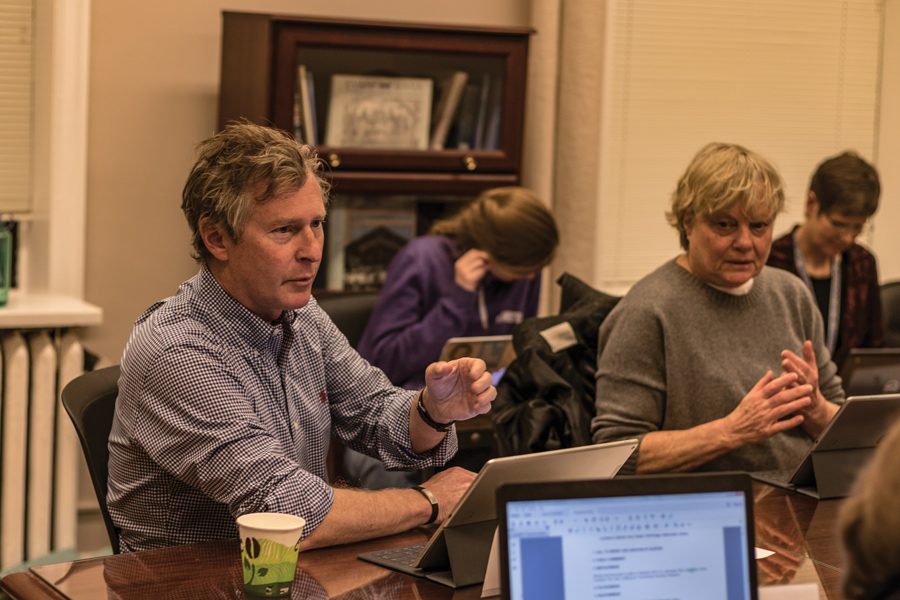Inclusionary Housing Ordinance Subcommittee investigates affordable housing
Alec Carroll/The Daily Northwestern
Ald. Donald Wilson (4th) speaks at a Inclusionary Housing Ordinance Subcommittee meeting. The committee began to consider improvements to the housing ordinance.
January 18, 2018
The Inclusionary Housing Ordinance Subcommittee analyzed the ordinance’s shortcomings and discussed additional projects for affordable housing at its inaugural meeting Wednesday.
Ald. Donald Wilson (4th) told The Daily the meeting was a “starting point” to look at challenges with the Inclusionary Housing Ordinance, roughly two years after it became law. It went into effect January 2016, requiring developers to either make 10 percent of their total units affordable, pay a fee-in-lieu, suggest an alternative equivalent proposal or petition for a reduction of the requirements.
Mayor Steve Hagerty made a brief appearance at the beginning to applaud the creation of the subcommittee, calling affordability a “complex problem.”
“I hope we can create an environment with more opportunities of affordability here in the community,” Hagerty said. “Everyone recognizes that there are huge market forces at play … but we do want to make sure that Evanston remains this socioeconomically diverse, racially diverse and ethnically diverse community.”
The committee includes four aldermen, nonprofit workers, real estate brokers and city staff.
“(The ordinance) was well-intentioned,” Wilson said. “As far as the actual impact, we’re not getting the kind of impact that collectively, as a community and as a council, we were expecting.”
Executive vice president of Riverside Investment & Development and committee member Kent Swanson said that from an economic perspective, inclusionary housing poses difficulties for developers and government. He said as market rates change, it becomes difficult to legislate the value of property.
Swanson said the city should look into alternative affordable housing projects other than new developments, such as creating units in existing buildings and lowering the cost of individual housing units to save money.
“It’s an expensive solution to be producing units at $300,000 a copy,” Swanson said. “You can’t help that many people. You have to create affordable housing in a way that costs much less.”
However, Wilson and other members of the committee said looking at affordable housing based on the lowest cost alone could perpetuate segregation.
Ald. Ann Rainey (8th) said the city has only produced a couple affordable housing projects, which is “not as easy as it sounds.” She added that members of the committee and community advocates “could use a workshop on housing development” to understand various solutions, how they work and who pays for them.
“(Affordable housing) is complex, and it costs a lot of money,” Rainey said. “If you start adding up all the costs of development, it has nothing to do with buying even an ounce of concrete or a piece of steel.”
The Inclusionary Housing Ordinance Subcommittee will hold its next meeting Feb. 7.
Email: [email protected]
Twitter: @caity_henderson


